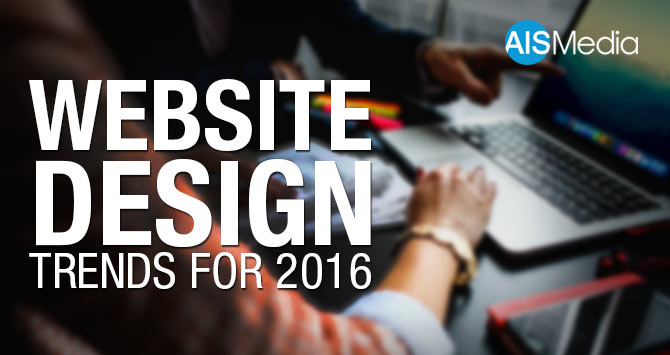Web design. We’re all familiar with the term but the discipline continues to grow, and evolve, and is now ubiquitous with all things. It’s important to dissect web design trends to see their impact.
As web design trends have evolved, designers, marketers, and content developers have needed to address not only new technologies but new expectations from users. From ever-present mobile devices to the end of “in your face” marketing prompts, 2016 is shaping up to be another explosive year in web design.
A Recap on 2015’s Web Design Trends
Google fully embraces mobile
As of April 2015, if your site isn’t mobile-friendly, Google isn’t friendly to your site. While responsive and adaptive sites aren’t new, Google forced the hands of every site owner that was waiting to embrace what users wanted, based on the device they were on. No more “one site for everyone.” Users expected their needs to be met depending on whether they were on a phone, tablet, or laptop.
Wearables
With the introduction of wearables designers and marketers were faced with another device that required unique content. While wearables have yet to reach a saturation point, designers can’t rest on their laurels. With more and more wearable options available to users, 2016 will continue to see growth in this market.
Just the facts and only the facts
Data continues to show that users’ attention is hard to come by. If you’re unable to hook a visitor immediately, odds are, they are going elsewhere. When it comes to web design it’s important that viewers be able to quickly find what they are looking for without interruption. That means less lightbox pop-ups, less “in your face” full ads and more focus on the user’s needs rather than marketing.
Web Design Trends for 2016
No cookie-cutter needed
The last two years have seen an explosion in quality themes and templates for WordPress, Drupal, etc. Along with this has been in influx of sites that largely look and operate the same, save for those sites that have taken this as an opportunity to break from the pack. 2016 will continue to see a proliferation of sites breaking from the mold giving users a more tailored and personalized experience at a more effective cost.
Card layouts
Thanks to Pinterest, more and more users expect to see content delivered to them as a scrolling selection of interests. While it’s well known that images are king for capturing attention, designers and marketers are beginning to understand that they can also lead to increased time on site and allow users to more easily make decisions about what content to consume next.
Micro-experiences and page height
While the adoption of mobile devices has lead us back to longer, vertically scrolling sites; heat and click maps often prove the fact that users rarely scroll beyond the first 35% of a page. Some companies have taken to providing a micro-experience with each section of a page allowing users both a greater sense of control and providing them a more rewarding experience without the need to scroll indefinitely.
Material Design
Largely driven by Google, Material Design focuses on UX. Using both depth and shadow sites can be more visually interesting than static, flat designs while maintaining a clean, modern look and experience. Material Design often seamlessly translates to mobile and app UI/UX, given its increased merit amongst designers.
Ready to get started? Contact us to learn more about our web design services.

